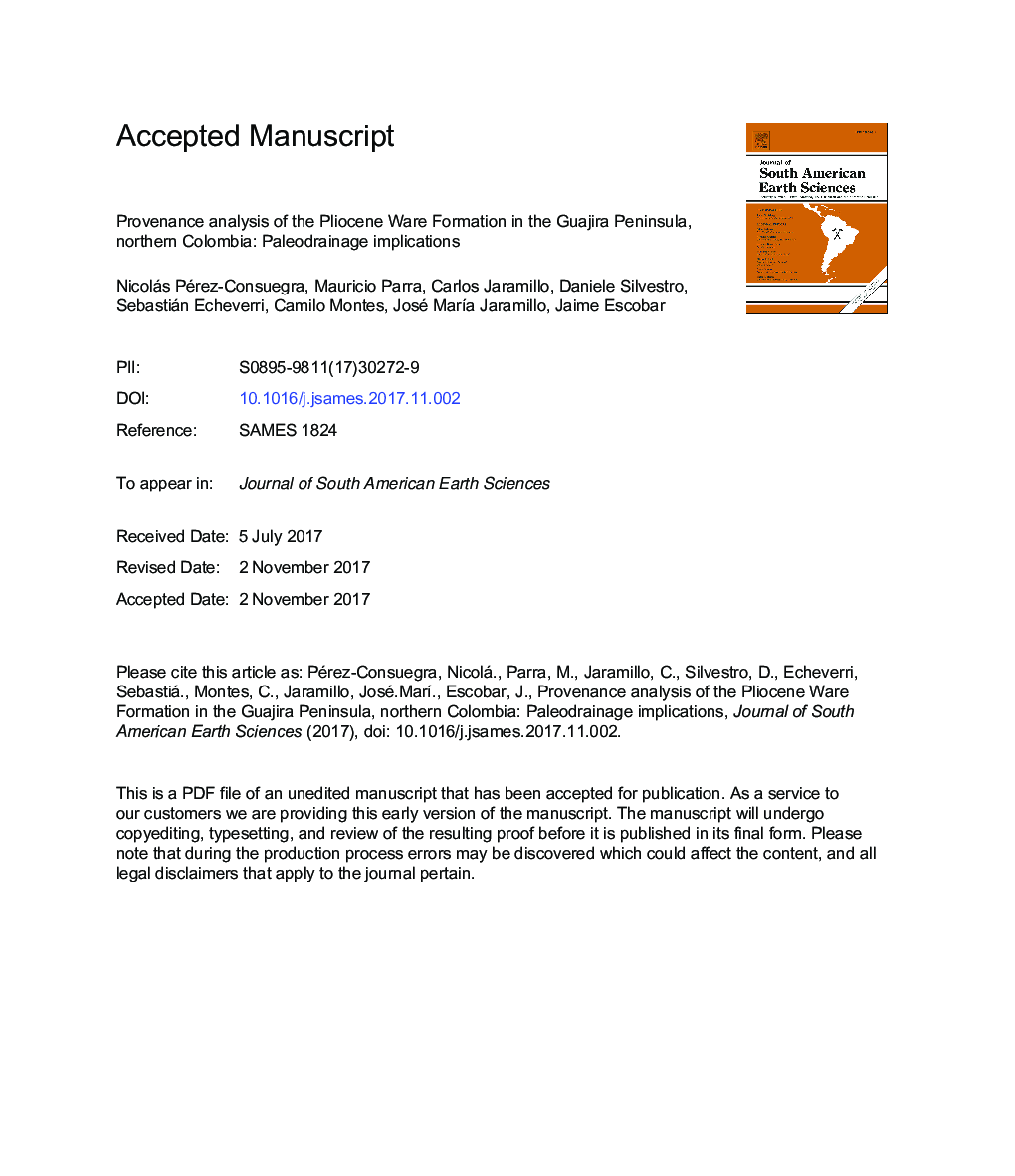| Article ID | Journal | Published Year | Pages | File Type |
|---|---|---|---|---|
| 8907757 | Journal of South American Earth Sciences | 2018 | 39 Pages |
Abstract
The Cocinetas Basin in the Guajira Peninsula, the northernmost tip of South America, today has a dry climate with low rainfall (<500Â mm/yr), a long dry season (>ten months) and no year-long rivers or permanent standing bodies of fresh water. In contrast, the fossil and geological record indicate that the Cocinetas Basin was much wetter during the Miocene-Pliocene (â¼17-2.8 Ma). Water needed to sustain the paleofauna could either have originated from local sources or been brought by a larger river system (e.g. proto Magdalena/Orinoco river) with headwaters either in Andean ranges or the Guyana shield. We present a provenance study of the Pliocene Ware Formation, using petrographic analysis of conglomerate clasts and heavy minerals, and U-Pb dating of 140 detrital zircons. Clasts and heavy minerals are typical of ensialic metamorphic and igneous sources. The detrital zircon age distribution indicates the Guajira ranges as the most probable sediment source. The overall results indicate that the fluvial system of the Ware Formation drained the surrounding ranges. The water was probably derived by local precipitation onto the Guajira peninsula.
Related Topics
Physical Sciences and Engineering
Earth and Planetary Sciences
Earth and Planetary Sciences (General)
Authors
Nicolás Pérez-Consuegra, Mauricio Parra, Carlos Jaramillo, Daniele Silvestro, Sebastián Echeverri, Camilo Montes, José MarÃa Jaramillo, Jaime Escobar,
